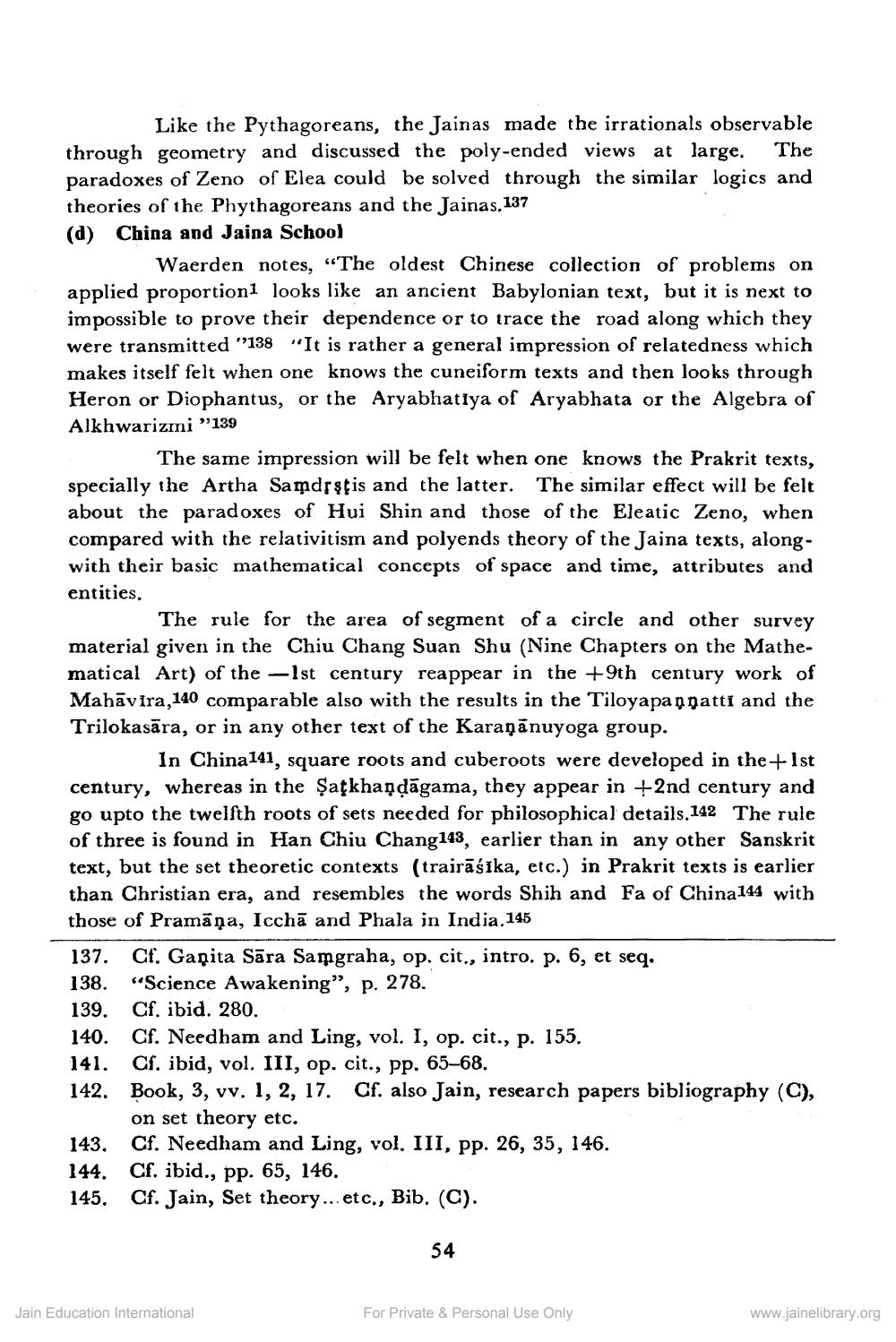________________
Like the Pythagoreans, the Jainas made the irrationals observable through geometry and discussed the poly-ended views at large. The paradoxes of Zeno of Elea could be solved through the similar logics and theories of the Phythagoreans and the Jainas, 137 (d) China and Jaina School
Waerden notes, “The oldest Chinese collection of problems on applied proportioni looks like an ancient Babylonian text, but it is next to impossible to prove their dependence or to trace the road along which they were transmitted "138 "It is rather a general impression of relatedness which makes itself felt when one knows the cuneiform texts and then looks through Heron or Diophantus, or the Aryabhatiya of Aryabhata or the Algebra of Alkhwarizmi "139
The same impression will be felt when one knows the Prakrit texts, specially the Artha Samdrstis and the latter. The similar effect will be felt about the paradoxes of Hui Shin and those of the Eleatic Zeno, when compared with the relativitism and polyends theory of the Jaina texts, alongwith their basic mathematical concepts of space and time, attributes and entities,
The rule for the area of segment of a circle and other survey material given in the Chiu Chang Suan Shu (Nine Chapters on the Mathematical Art) of the - 1st century reappear in the +9th century work of Mahāvira, 140 comparable also with the results in the Tiloyapannatti and the Trilokasära, or in any other text of the Karagānuyoga group.
In China141, square roots and cuberoots were developed in the+Ist century, whereas in the Satkhaņdāgama, they appear in +2nd century and go upto the twelfth roots of sets needed for philosophical details. 142 The rule of three is found in Han Chiu Chang143, earlier than in any other Sanskrit text, but the set theoretic contexts (trairāśika, etc.) in Prakrit texts is earlier than Christian era, and resembles the words Shih and Fa of China 144 with those of Pramāņa, Icchā and Phala in India. 145 137. Cf. Ganita Sāra Samgraha, op. cit., intro. p. 6, et seq. 138. “Science Awakening", p. 278. 139. Cf. ibid. 280. 140. Cf. Needham and Ling, vol. I, op. cit., p. 155. 141. Cf. ibid, vol. III, op. cit., pp. 65–68. 142. Book, 3, vv. 1, 2, 17. Cf. also Jain, research papers bibliography (C),
on set theory etc. 143. Cf. Needham and Ling, vol. III, pp. 26, 35, 146. 144. Cf. ibid., pp. 65, 146. 145. Cf. Jain, Set theory...etc., Bib. (C).
54
Jain Education International
For Private & Personal Use Only
www.jainelibrary.org




